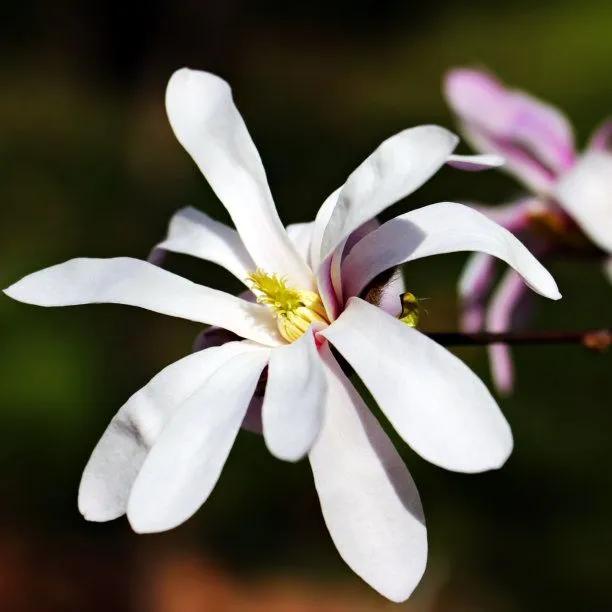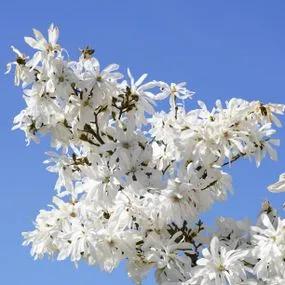Star Magnolia Trees
The details
- Lovely silky buds in late winter
- 10cm wide white flowers on bare branches in March
- Mild fragrance
- Low maintenance, naturally tidy
- Ideal for small gardens
- Hardy, but sheltered locations are best in Scotland
- To 3m x 4m
Recommended extras
Description
Star Magnolia Trees: Magnolia stellata
A naturally graceful large shrub or small tree with distinctive, softly scented white flowers that open from silky buds in March and cover the branches before the leaves appear. The new foliage has hints of bronze and turns yellow in autumn. The fruit pods are a minor attraction, with orange seeds poking out from the greyish coating, but you probably won't see these every year as they tend to fall off early in the British climate.
Browse all of our ornamental trees here, or our other trees for small gardens.
Features:
- Bronze tinted new foliage, yellow in Autumn
- Lovely silky buds in late winter
- 10cm wide white flowers on bare branches in March
- Mild fragrance
- Low maintenance, naturally tidy
- Ideal for small gardens
- Hardy, but sheltered locations are best in Scotland
- To 3m x 4m
Growing Star Magnolia
The best soil is neutral or acidic, well drained, and slightly on the sandy side, but not prone to drying out in summer. They will tolerate most alkaline soils (shallow chalk may be a bit too much), but improve them well with organic matter and water well during hot summers.
The tree itself is fully hardy, but late spring frosts can ruin the flowers, so it may be worth having a horticultural fleece ready to protect them, especially in the North. A sheltered location is best, with full sun or light shade.
The roots are quite shallow and delicate, so it is important not to trample the soil under the canopy and for about half a metre around it.
Did You Know?
A Japanese native introduced to Britain in the late 1870's by the plant breeding giant of the era, Veitch Nurseries, it was originally named Magnolia tomentosa by Carl Peter Thunberg, one of Linnaeus' top henchmen, sometime around the 1760's (tomentose means woolly, referring to the flower buds; in Latin, a tomentum is a stuffing made from wool or feathers).
Seeking glory, the German botanists Siebold and Zuccarini renamed it Buergeria stellata in 1846, but their scheme was undone in 1872 by the notorious Karl Ivanovich Maximovich, and it became a magnolia once more, keeping the new species name. A Dr. Benjamin Blackburn, an American botany professor, saw his opportunity a few decades later, and nudged it into a subspecies of the Kobushi magnolia, Magnolia kobus. And there it remained for the best part of a century, until David Hunt (1946-2018) single-handedly defeated all the opposition using only a hardback copy of his book, Magnolias and Their Allies, in 1998.
Despite being a popular ornamental tree around the world, it is endangered in its native range due to urbanisation, like so many wild magnolia species.



